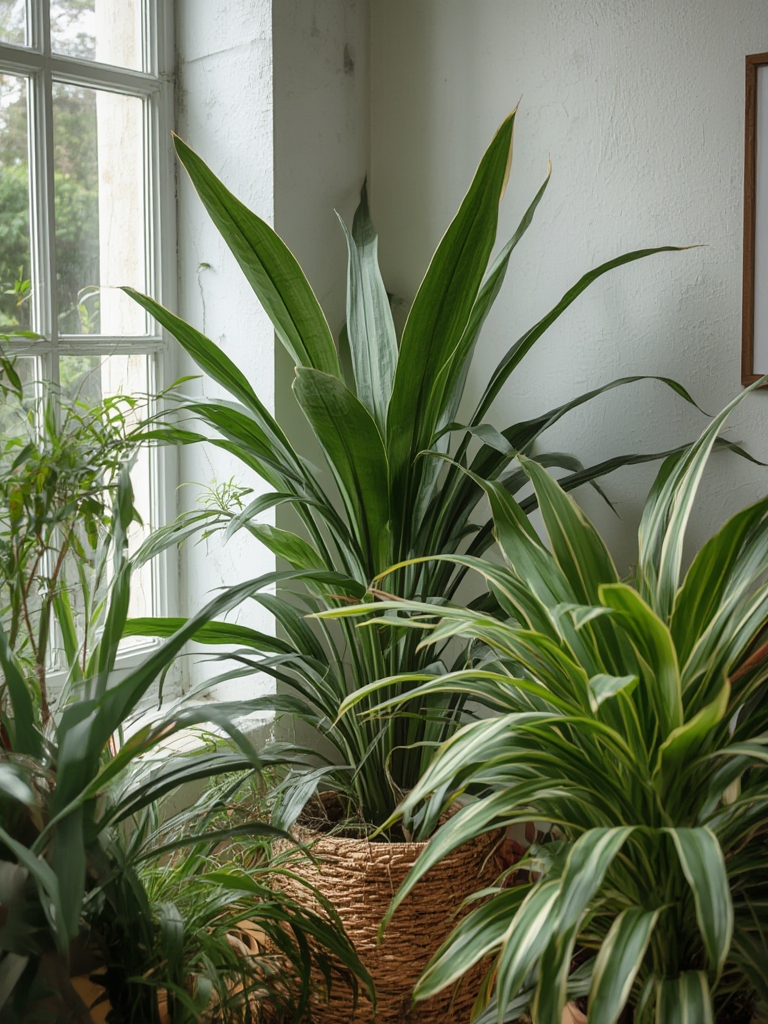
Indoor plants are more than just décor; they improve air quality, boost mood, and add a touch of nature to any space. Whether you live in a sun‑filled loft or a dimly lit apartment, there are low‑maintenance varieties that thrive in almost any environment. Below you’ll find a data‑driven, step‑by‑step guide to selecting, planting, and caring for easy‑care indoor greens, plus actionable tips to keep them thriving year after year.
Why Indoor Plants Matter for Your Home and Health
Research from NASA and multiple indoor‑air‑quality studies shows that certain houseplants can remove volatile organic compounds (VOCs) such as formaldehyde, benzene, and trichloroethylene. A 2022 meta‑analysis found that a single Spider Plant (Chlorophytum comosum) can reduce indoor formaldehyde levels by up to 30 % in just 24 hours. Beyond air purification, a 2021 survey of 1,200 urban dwellers revealed that 68 % reported lower stress levels after adding greenery to their living spaces. These data points underline why even the most modest plant collection can have a measurable impact on well‑being.
Top Easy‑Care Indoor Plants for Any Light Level
Below is a curated list of low‑maintenance plants, each chosen for its ability to thrive in specific light conditions while requiring minimal watering and pruning.
Low‑Light Champions
- ZZ Plant (Zamioculcas zamiifolia) – Tolerates fluorescent office lighting; stores water in thick rhizomes.
- Snake Plant (Sansevieria trifasciata) – Survives neglect, filters air, and releases oxygen at night.
- Philodendron Brasil – Thrives in indirect light; its heart‑shaped leaves add a splash of color.
Medium‑Light Favorites
- Pothos (Epipremnum aureum) – Grows quickly in moderate light; excellent for trailing displays.
- Peace Lily (Spathiphyllum wallisii) – Blooms in filtered light and signals watering needs with drooping leaves.
- Spider Plant (Chlorophytum comosum) – Produces “pups” that can be propagated easily.
Bright‑Light Beauties
- Succulent Mix (Echeveria, Haworthia) – Requires direct sunlight for 4–6 hours daily.
- Fiddle‑Leaf Fig (Ficus lyrata) – Needs bright, indirect light; a statement piece for larger rooms.
- Aloe Vera – Sun‑loving, medicinal, and drought‑tolerant.
Step‑by‑Step Care Guide for Indoor Plants
1. Choose the Right Pot and Soil
- Pot selection: Opt for a container with drainage holes. For low‑light plants, a slightly larger pot prevents water from sitting too long.
- Soil mix: Use a well‑draining potting mix (e.g., 40 % peat, 30 % perlite, 30 % pine bark). For succulents, add extra sand or grit.
- Actionable tip: Place a saucer beneath the pot, then add a layer of small pebbles to improve airflow and prevent root rot.
2. Position Your Plant for Optimal Light
- Measure light intensity: A cheap smartphone lux meter can help. Low‑light plants thrive at 50–250 lux, medium at 250–500 lux, and bright at 500–1,000 lux.
- Rotate weekly: Turn the pot 90° every 7 days to ensure even growth.
- Actionable tip: If natural light is insufficient, supplement with a full‑spectrum LED grow light set on a 12‑hour timer.
3. Water Wisely
- Check moisture first: Insert your finger 2 cm into the soil; if it feels dry, water.
- Watering method: Water until it drains out the bottom, then discard excess.
- Frequency: Low‑light plants typically need water every 10–14 days; succulents every 3–4 weeks.
- Actionable tip: Use a watering can with a narrow spout to target the soil and avoid leaf wetness, which can cause fungal issues.
4. Feed and Fertilize
- Balanced fertilizer: A 10‑10‑10 NPK formula diluted to half strength works for most indoor plants.
- Schedule: Feed during the growing season (spring–early fall) once a month; skip fertilizing in winter.
- Actionable tip: Add a pinch of organic seaweed powder to the water once a quarter for micronutrients.
5. Prune and Propagate
- Pruning: Remove yellow or brown leaves at the base with clean scissors to encourage new growth.
- Propagation: For pothos and spider plants, cut a 5‑inch stem with a node, place in water for 2–3 weeks, then transfer to soil.
- Actionable tip: Label each cutting with the date and variety to track success rates.
Troubleshooting Common Issues
Yellowing Leaves
Often a sign of over‑watering or poor drainage. Verify that the pot’s holes are clear, and let the soil dry out for a few days before the next watering.
Leggy Stems
Indicates insufficient light. Move the plant closer to a window or increase LED exposure. For succulents, rotate the pot to balance growth.
Brown Leaf Tips
Usually caused by low humidity or salt buildup from fertilizer. Mist the foliage lightly (especially in winter) and flush the soil with clear water every 2–3 months.
SEO‑Friendly Tips for Publishing Your Indoor‑Plant Blog
- Keyword placement: Include primary keywords (“indoor plants,” “low‑light indoor plants,” “easy‑care houseplants”) in the first 100 words, H2 headings, and alt text of any images.
- Structured data: Use
schema.org/Articlemarkup to help search engines understand the post’s format and improve click‑through rates. - Internal linking: Connect this guide to related posts such as “Best Soil Mixes for Houseplants” or “How to Choose the Right Grow Light.”
- Readability: Keep sentences under 20 words, use bullet points, and break up text with H3 subheadings to lower the Flesch‑Kincaid reading level.
- Image optimization: Compress photos to under 150 KB, add descriptive
altattributes (e.g., “ZZ plant in low‑light corner”), and include a caption with a keyword.
By following these data‑backed steps and SEO best practices, you’ll not only cultivate thriving indoor greenery but also create content that ranks well, attracts traffic, and keeps readers coming back for more plant‑care inspiration.


Leave a Reply